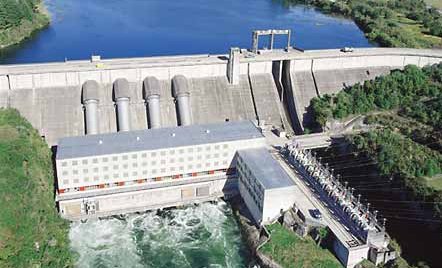 |
|
|
 |
 |
| Department of Energy Technology Engineering |
 |
 |
 |
|
 |
| Automatic Control Systems |
| Course Code: |
5303C |
| Course Type: |
Theory & Laboratory |
| Course Category: |
Core Module |
| Hours per Week: |
7 (Theory 5, Lab 2) |
| Credit Units: |
7,5 |
| Semester: |
5 |
Aims and Scope
The main objective
of this course is to enable students become familiar with the structure and methodologies
of Automatic Control Theory and to acquire both study and practice skills relative
with its application in manufacturing and energy systems.
The aims of
the theoretical part of this course are the following:
Α) The teaching
of the classic and modern methodologies conditioning the Systems Analysis in both
Time and Frequency domains.
Β) The teaching
of the classic and modern methodologies conditioning the Systems Design in both
Time and Frequency domains.
The aims of
the laboratory part of this course are the following:
Α) The acquisition
of experience and skills on the Automatic Control of Systems by using either
analogue or digital control units.
Β) The acquisition of experience and skills on the
use of dedicated software for the simulation, the study and the control of
systems and the design of control schemes.
Course Description
Theory: Introduction
to Automatic Control Systems. Explanation of key concepts. Understanding the process
of the mathematical description and study of systems by using either transfer functions
or state equations. Analysis of the characteristic
features of both transient and steady state. Application of Laplace
Transformation in Automatic Control Systems. Analysis of basic structural
elements of Automatic Control Systems. Analysis of Electrical, Mechanical,
Hydraulic and Pneumatic Automatic Control Systems. Analysis of the representation
of Automatic Control Systems by using block diagrams. Explanation of process of
finding the transfer functions of complex Automatic Control Systems. Study of the
process of investigating the systems stability by using algebraic criteria.
Study of the process of investigating the systems stability by using Bode and
Nyquist plots. Analysis of the Root Locus Method. Investigation of Systems Controllability
and Observability through the application of relative criteria. Application of
Output Feedback Control. Application of State Feedback Control. Introduction to
PID controllers.
Laboratory: Acquisition of experience and skills on the operation
Electrical, Mechanical, Hydraulic and Pneumatic Automatic Control Systems.
Familiarity with the instruments and devices used in Automatic Control Systems.
Acquisition of basic knowledge and experience in computer aided systems
control. Acquisition of experience and skills on the use of appropriate software
(Matlab/Simulink) for the simulation of systems, the study and control of their
dynamic behavior and the design of controllers.
Expected Course Outcome
After the
end of the course the student will be able to:
- Opinion on the stability of linear systems
- Calculate the output of a system in
the time domain
- Distinguish the transition state of
a system from its steady state
- Calculate the error and the output
in steady state
- Simplify a complex block diagram
- Construct Bode diagrams and calculate
gain and phase margins
- Calculate maximum overshoot and
rise and recovery time
- Apply PID control
- Find the characteristic equation of
the state table and its eigenvalues
- Perform system control by using the
feedback of either the state vector or the output vector
- Comprehend the operating components
of computer aided system control
- Perform the representation,
simulation and control of systems by using Matlab/Simulink.
Bibliography
Greek:
- Βαφειάδης, Π. Μαθήματα Συστημάτων Ελέγχου, 3η έκδοση, Αθήνα: 2009. Τόμοι Α’,Β’.
- Καρύμπαγκας - Σερβετάς, Συστήματα αυτομάτου ελέγχου, τόμοι Α’,Β’,Γ’. Αθήνα 1985.
- Μαλατέστας, Π. Β., Συστήματα Αυτομάτου Ελέγχου, Εκδ. Τζόλια, Τόμοι Α’,Β’, 2004.
- Πανταζής Ν., Αυτοματισμοί με PLC. Αθήνα: Σταμούλης, 1998.
- Παρασκευόπουλος Π., Εισαγωγή στον αυτόματο έλεγχο, Τόμος Α’ - Θεωρία, Αθήνα 2001.
- Παρασκευόπουλος Π., Εισαγωγή στον αυτόματο έλεγχο, Τόμος Β' - Εφαρμογές, Αθήνα 2001.
- Πετρίδης Β., Συστήματα αυτομάτου ελέγχου, Τόμοι 1 και 2, Θεσσαλονίκη 1987.
- Σύρκος – Κούκος, Εισαγωγή στη Σχεδίαση Συστημάτων Ελέγχου με το MATLAB (Βελτιωμένη Έκδοση), Παπασωτηρίου, Αθήνα 2005.
- Τζαφέστας Σ., Συστήματα αυτομάτου ελέγχου. Τόμοι 1, 2 και 3, Πάτρα-Αθήνα: 1975.
English:
- Brogan, William L, Modern Control Theory, 3rd Edition, 1991. ISBN 0135897637.
- Chen, Chi-Tsong, Linear System Theory and Design, 3rd Edition, 1999. ISBN 0195117778.
- Dorf and Bishop, Modern Control Systems, 10th Edition, Prentice Hall, 2005. ISBN 0131277650.
- Franklin, Powell & Enami, Feedback Control of Dynamic Systems, 5th Edition, Addison-Wesley, 2005.
- Hamming, Richard, Numerical Methods for Scientists and Engineers, 2nd edition, Dover, 1987. ISBN 0486652416.
- Kalman, R. E., On the General Theory of Control Systems, IRE Transactions on Automatic Control, Volume 4, Issue 3, p110, 1959. ISSN 0096199X.
- Kuo & Golnaraghi, Automatic Control Systems, 8th Edition, Wiley, 2002.
- Ogata, Katsuhiko, Solving Control Engineering Problems with MATLAB, Prentice Hall, New Jersey, 1994. ISBN 013045.
|
| Created Date : 23/05/2013 |
|
|
|
| |
|
|
|
|
|
|
 |